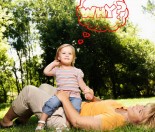Most children can learn self-control if they’re given the right help. In this article we dive into learning self-control in the field of life.
In his classic 70s book, The Road Less Travelled, Scott Peck said a sign of maturity is how well a person can regulate their emotional responses in proportion to an event that might trigger an emotional reaction in them.
If someone pulls out in front of me in their car, just how mad should I get?
If someone appears to queue-jump and I’ve been waiting a while, just how annoyed will I let this make me?
According to Peck, the degree to which we develop an ability to balance our emotions, with our ability to think proportionately about a triggering event is a sign of emotional maturity.
So, what might, at first glance, look like a blatant act of selfishness by someone, could just as easily be an innocent mistake. The driver who pulled out in front of me may not have seen me.
Of course, in other circumstances, it may well be that people’s actions are selfish! But, before we can tell, we need to consider a few things, and it’s not useful to always jump to harsh conclusions.
Most children can learn self-control if they’re given the right help. That is, they can learn to gauge and measure their emotional reactions to triggering events.
And, the older a child becomes, the better they should be getting at this.
Some children (and even some parents) react in a 9/10 way to almost everything, even if the triggering is something minor and really only warrants a 3/10 response.
Maturity is when we can respond appropriately, even when our emotions are heated.
Learning self-control in the field of life
Let me tell you my rugby story to show you what I mean.
Here’s the scene: the Wallabies are playing the All Blacks. There’s a roaring 80 thousand-strong crowd and New Zealand has drawn a scrum feed as a result of an Australian knock on. It’s close to fulltime, and the Australians are in front by a whisker.
The All Blacks are close to the Wallabies’ line. The scrum packs down, and very quickly the New Zealand second rower jabs a punch through the middle of the scrum, hitting his opposite number!
The Aussie forward hits back and a melee breaks out. Punches fly, and it would appear that every forward is involved in the ensuing skirmish.
But, after the dust has settled, the Australian forward is ordered to stand before the referee. Here is a 26 year old male, weighing over 110kg and standing 190cm tall. His body language communicates his emotional state. He’s seething because he feels unfairly identified as causing the fight and he’s just about to be penalised which will result in his team losing the game.
Emotional ‘toggling’
Inside his head, this player’s brain is going at a thousand miles an hour, between the part of his mind that wants to hit the referee in the face, or verbally abuse him, and another part of his brain that’s trying desperately to maintain self-control. This part of his mind is saying, “I’ll be suspended for life if I touch the referee. I’ll be sent off if I do that. I need to hold it together.”
In his mind, he’s exercising enormous self-control; I call this process toggling.
This man is toggling between the part of his mind that is reacting (responding to an emergency) and the part of his mind that’s putting on the brakes in a desperate attempt to ‘hold’ onto his emotions, or inhibit his emotional reaction to what has occurred.
Like the rugby player, we want to encourage our children to use that part of their brain that allows them to hold their immediate emotional response and check their behaviour.
We want them to learn to measure their emotional reaction in proportion to the triggering event.
If a parent says, ‘No, you can’t go next door to your friends’ place (because it’s dinner time)’ we don’t want the child to automatically get mad and hit things or shout abuse at their mum.
Rather, we want them to get better at exercising some level of self-control.
This type of self-control in the child is a process similar to the one the rugby player is displaying. It’s a process involving the child quickly toggling between an emotional reaction (getting mad at mum for not letting them go) and arresting that reaction (which is saying, ‘hold it together; it’s okay ’).
It’s by teaching our kids to toggle like this, that we give them practice at learning the skills to manage their own difficult behaviour.
But to toggle successfully, the child needs to be reminded by their parents about what’s an acceptable reaction to a frustrating event. The process is one in which children learn to apply the brakes to their behaviour as the situation requires.
They first need to recognise what a ‘triggering event’ looks like. Then they need to compare the event to trigger’s they’ve experienced previously, so they can measure an appropriate emotional response. Then they need to toggle between an automatic outburst, and an acceptable reaction. So there’s a lot going on here, and they’re going to need a lot of practise to get the balance right.
While coaching children about their emotions is crucial, using something like 1-2- 3 Magic & Emotion Coaching, which is a signalling system, helps a child get better at controlling themselves. It teaches children to react proportionately to frustrating events.
Now that you know a little more about learning self-control, you might like Using empathy to deal with your child’s emotions. Or, for even more expert advice check out our Development and Behaviour sections.






